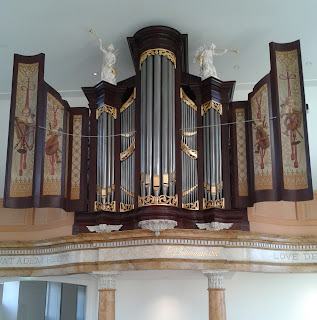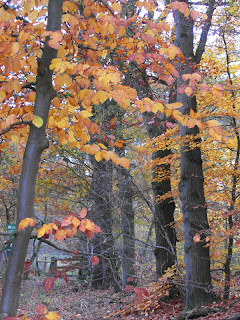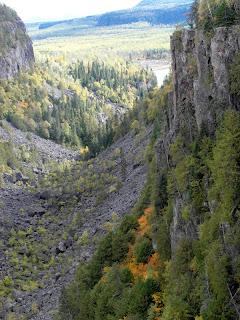After a road trip of 3850 kilometers, we are now
luxuriating in a beach house in Virginia Beach.
Beach house is a euphemism for “palatial mansion” built on the beach of this
lovely part of Virginia. It has a
southerly feel, because of the heat and the humidity. Not the dry heat of the Rockies
or Nevada.
Dawn
Here I live a life of
leisure, taking a dip in the indoor pool, followed by a dive into the ocean
which is warm in comparison. Not like the cold and grey North Sea,
never warm, never really clear, only enjoyed by masochistic swimmers. It is a
joy getting into the water here, being beaten by the surf and swept off one‘s
feet.
Waders, too quick for the camera
Watching the pelicans from one of the decks, the dolphins playing around
and cruising along the shore, seeing the little waders quickly running in front
of the waves, foraging in the wet sand, it is all bliss. I go for long walks
mornings and evenings, just after dawn, when the sun has risen over the water,
and the crabs scuttle away into their holes. We could be on the moon, with
hundreds of small craters everywhere.
"Beach houses" for crabs
The crabs have a sandy colour and the
small ones are only noticed when they race away, sideways of course. They are called sandfiddlers or sandpipers.
There aren’t many shells on the beach, but crablike creatures with long tails
looking like warriors from outer space are washed ashore regularly. They have
no meat to them so are not edible, and they look really weird.
Extraterrestial invasion?
Because of the
surf the air seems misted over. Distances are deceptive. On one side there are
the beach houses, veritable palaces, although interspersed with more modest and
older ones, weathered and not brightly painted like the new abodes. The houses
go on and on, facing the sea and the dawn which comes in many shades of pink
and orange. The wet sand mirrors the sky. Walking along the waterline is like
walking the sky. It is best early in the morning, when hardly anybody is about
yet, except for the anglers who think it the perfect time for a good catch.
The house at dawn
The house fills up gradually, with new guests arriving every
day, till all the ten rooms will be occupied and everything will be ready for
the big wedding.
Knowing that in Winnipeg
where we came from the first snow has fallen and temperatures are below zero at
night, makes us all the happier that we can enjoy those wonderful summer days
here on the beach. We eat mussels and clams, the shells piling up on the tables
on the deck and in the kitchen, use the two big BBQs, eat and drink from the
six (!) fridges filled to overflowing, while the bride and groom and her
parents chop and peel potatoes, carrots and cabbage, pummel a catering size
casserole full of bread dough, slave away preparing everything for their great
day. This is how they wanted it, and this is what they are doing. The cupboards
are full of home made preserves and pickles, the freezers stuffed with
containers of lasagna, the champagne is waiting in the cellar. The bride and
groom will be worn out by the time of the wedding, but this is their choice.
Among all the family members, I am a welcome guest, although up till now the
only one who is not a family member. More friends will arrive on Saturday, but
for now it is just family.

Sunset
The house is wonderful with its outdoor and indoor pool, the
spacious ten bedrooms all with their own bathroom, the round library with –
while I am writing - a view of the moon on the water. But I could be happy in a
modest beach house. It is the view that makes me happy, and being among friends
and accepted as one of the family.
Canada
with its cold days and nights, its stunning autumn colours, its lakes and rocky
outcrops, its barns red or weathered, seems very far away. But is was only last
week we were there. We stayed with friends in Deep River, a name as poetic as
names come, the small town living up to it with leafy streets, nice and well
kept houses, a marina in the Ottawa River, and houseboats floating on the
water. So different from the marina in Alexandria,
where we stayed with friends of mine, a woman once in my charge when she was an
8-year old girl, living in the Netherlands
for two years. Alexandria has
pastel coloured houses, some dating back to the 17th century. Not so
many trees here, but a busy and lively main street, leading down to the Potomac
and the marina, where even cruise ships moor. There is a nice and modern river
walk with shops, café s and a park.
In Alexandria
the temperature changed. It was our first warm day turning into a very hot and
humid one. How quickly one forgets the cold, and how addictive is this life
style! I will enjoy it as long as it lasts, as next week we drive north again, towards
Minnesota, into autumn, and as
far as Winnipeg is concerned into
the icy tentacles of winter.



















































